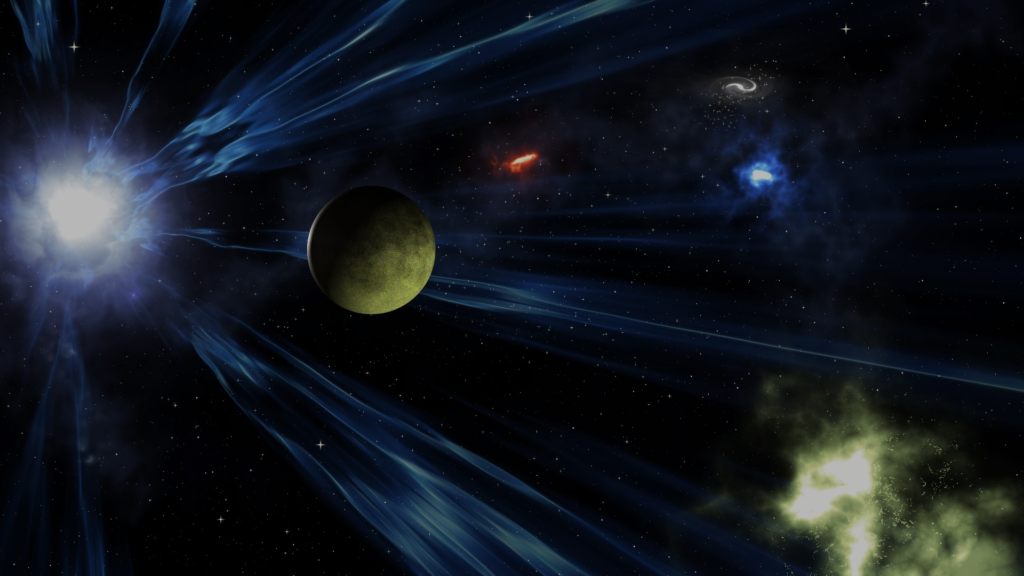## Journey Through the Milky Way Galaxy: Its Structure and Wonders!
Ever looked up at the night sky and wondered about the swirling, hazy band of light stretching across it? That, my friend, is the Milky Way Galaxy – our cosmic home! It’s a breathtaking spiral galaxy containing billions of stars, including our own Sun, and untold mysteries waiting to be unveiled. Prepare for a thrilling journey as we explore its incredible structure and uncover some of its most fascinating wonders.
### 1. A Galactic Disc: More Than Just Stars
Imagine a giant, flat disc, spinning slowly in space. That’s the basic structure of the Milky Way. This disc, about 100,000 light-years in diameter and relatively thin (around 1,000 light-years thick), is where the majority of the galaxy’s stars reside, including those dazzlingly bright ones you see on a clear night. Think of it like a giant, cosmic vinyl record, but instead of grooves, it’s filled with stars, gas, and dust. These aren’t randomly scattered; they’re organized into spiral arms, like elegant swirls emanating from the galaxy’s center.
Our Sun, located about two-thirds of the way out from the center, sits within one of these spiral arms, called the Orion Arm. To put that distance into perspective, if you could travel at the speed of light, it would still take you over 26,000 years to reach the galactic center!
### 2. The Galactic Bulge: A Stellar Heart
At the heart of the Milky Way lies a dense, bulging region called the galactic bulge. This central region is packed with older stars and is shaped like a slightly flattened sphere. Astronomers believe it contains a supermassive black hole – a region of spacetime with such intense gravity that nothing, not even light, can escape – known as Sagittarius A*. This black hole is millions of times more massive than our Sun and plays a crucial role in the galaxy’s dynamics. It’s like the invisible, powerful engine driving the entire galactic machinery.
### 3. The Halo: A Ghostly Embrace
Surrounding the disc and bulge is a vast, spherical halo. This halo is sparsely populated compared to the disc, containing mostly older stars, globular clusters (dense groups of hundreds of thousands of stars), and – you guessed it – dark matter. Dark matter is a mysterious substance that we can’t directly observe, but its gravitational effects on visible matter tell us it makes up a significant portion of the galaxy’s mass. It’s like the invisible scaffolding holding the entire galaxy together.
### 4. The Spiral Arms: Star Formation Factories
The spiral arms aren’t just pretty patterns; they’re regions of intense star formation. The density of gas and dust is higher in these arms, creating conditions where new stars are born. Imagine these arms as cosmic nurseries, where clouds of gas and dust collapse under their own gravity, igniting into brilliant new stars. These newly born stars then contribute to the overall beauty and dynamism of the Milky Way.
### 5. Beyond Our Backyard: A Universe of Galaxies
The Milky Way isn’t unique; it’s just one of billions of galaxies in the observable universe. It’s part of a larger group called the Local Group, which includes our neighboring Andromeda Galaxy. Understanding our own galaxy gives us invaluable clues about the formation and evolution of galaxies throughout the cosmos.
**Summary and Call to Action:**
Our Milky Way Galaxy is a breathtaking spectacle of cosmic proportions, a swirling city of stars, gas, and mysterious dark matter. From its central supermassive black hole to its spiral arms teeming with newborn stars, the Milky Way continues to captivate astronomers and stargazers alike. So, the next time you look up at the night sky, take a moment to appreciate the magnificent structure and wonders of our galactic home. What other mysteries do you think the Milky Way holds? Share your thoughts in the comments below! And don’t forget to look up and explore the night sky – perhaps you’ll even spot some of the wonders we’ve discussed!


